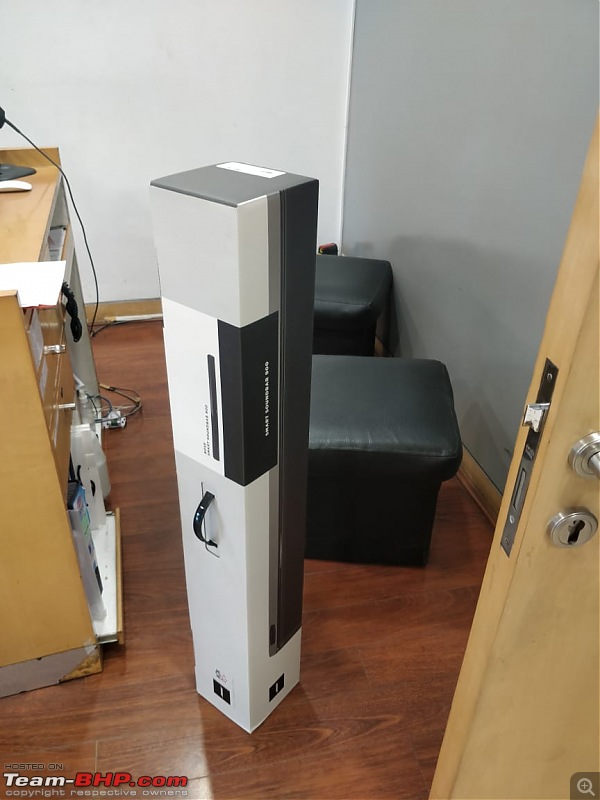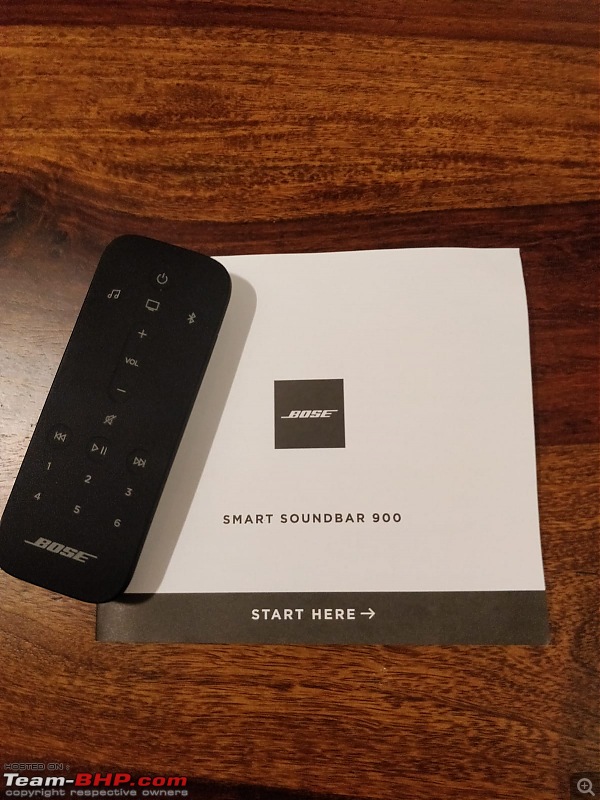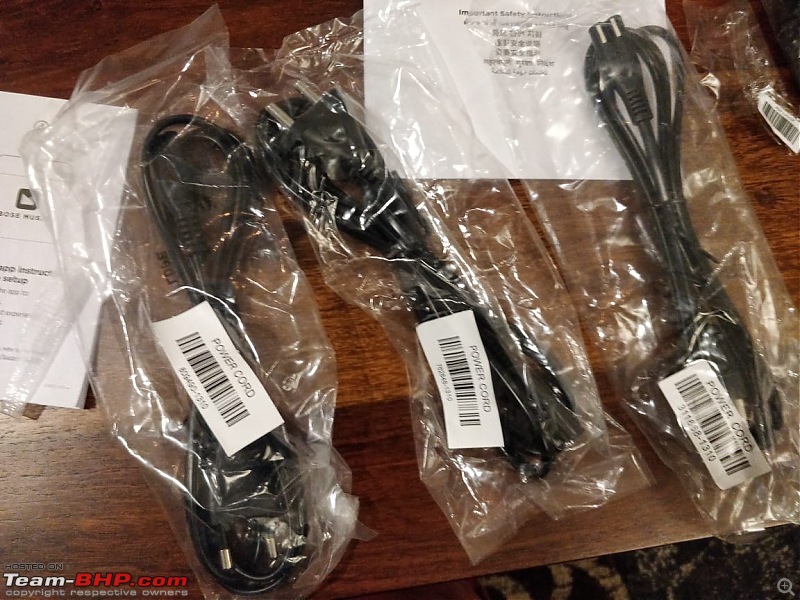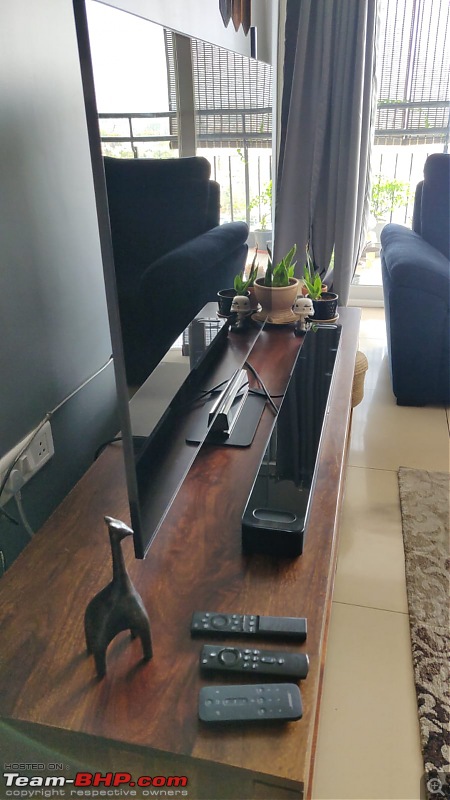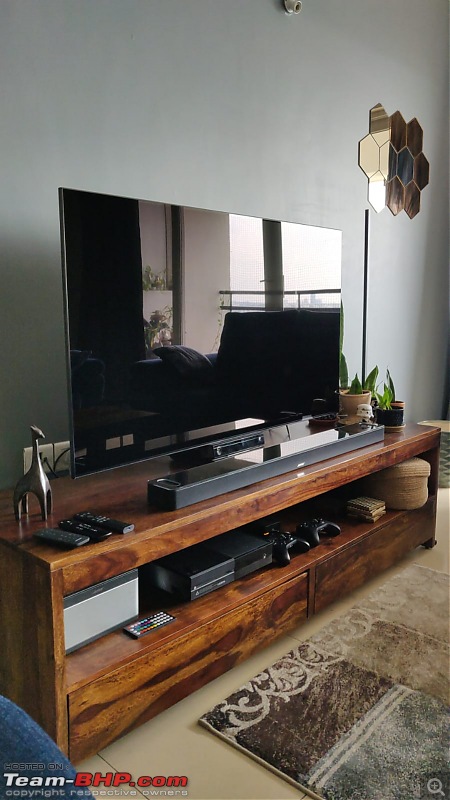| Senior - BHPian
Join Date: Apr 2011 Location: 3rdRockFmTheSun
Posts: 1,224
Thanked: 2,824 Times
| Re: The Home Theater thread
Quote:
Originally Posted by mail2sekh  Other requirements and thoughts: I could be way off the mark and some of these might sound naive to the pros but just figuring my way around the terminologies. |
Some quick notes to consider, mate:
These are general and there are likely to be exceptions to them, as to most things. The following comes from a mix of lots of reading and surely some experience. Someone like Navin with huge experience of equipment might be able to correct and add to it and I would find it valuable. - Please do try and hear what you propose to spend about 3L on. For similar segment of an AV Receiver, the difference in audio quality might not be too big unless you have very sharp ears and skilled listening. What will significantly vary is the room compensation circuitry and how well the AVR manages the flaws in the acoustics of the room.
. - Marantz and Denon come from the same group, with Marantz promoted as a more audio focused one and Denon movie focused, though many say that it is rare for anyone to be able to distinguish between them in a blind test; especially in a home setting. Yamaha too is considered a good one to go with. Service availability around you would be worth considering.
I also take the weight of an AVR as a significant indicator, though opinions on that vary. It is also worth considering the interface - display, remote, and also app you are comfortable using.
. - An 11.2 AVR could allow you to use the power of the extra speakers to feed another room, or even supply extra power to the front L and R speakers, thereby giving cleaner sound. An 11.2 is also likely to have bigger and better power supplies than a 9.2 system, so even if you use it only in 9.2 mode, you do gain on cleaner sound. All this becomes relevant if you listen to thing a bit loud. Many might not end up using the power of a 9.2 enough.
. - Playing at a lower volume typically gives cleaner sound, and also plays a role in longevity of speakers. So if the AVR is of a higher capacity, one can play it at a lower volume. Contrary to popular belief, more often it is the distortion which spoils speakers than momentary loud sound. Low volume typically means lower distortion.
. - With an AVR with decent specs for the job, it is the speakers which will make the big difference. Especially the front pair, centre speaker and subwoofer.
. - Subwoofer: With 3L as a budget, I would ensure I have a good sub, and would surely look beyond what Taga offers. They do have some excellent regular speakers though. Consider subwoofers which have a correction mechanism like Servo. A sub creates high energy sound waves, which themselves interfere with the movement of the sub's cone. Such compensation mechanisms compensate for such distortion. Consider Rhythmik - it is an entry into audiophile subs. It would also likely help if the room is acoustically poor. A recent post about a bulk buy was made on the forum.
All this, assuming you like nuanced well integrated bass. If loud punch is all you are after, then such a sub might be a waste.
. - With a good subwoofer, it is typically recommended to set the AVR setting for front speakers to "small speakers". This is to reduce the interference of the same frequencies being emitted by both the Sub and large floor standing speakers. So, in many cases, one is effectively paying for a floor stander and using it like a bookshelf. Front speakers might be set as "large" to allow them the full spectrum of frequencies they can play, however the system needs to be well calibrated. Unless you have a large room which the sub can't cover well, you might not find much benefit. In fact, you might find cleaner sound with the small setting or simply with bookshelf speakers placed well.
. - Placement and direction of speakers too has a big effect, as do proper configurations of the system. Especially with large front speakers and those set to full, one could actually end up reducing the bass if configured poorly. Our seats, and also speakers, being a bit away from walls helps (impacts reflection of sound). At times, only a slight change in the direction of the front speakers improves sound.
. - Floor standing speakers can be put to good use for music, if you are a 2.0 purist. It also helps in music which has not been engineered well for a subfoofer - typically low budget, some live stuff, and especially olden music in times when subwoofers were very uncommonly used.
. - Let price not tell you what speaker is likely to be good. We hear differently. Also have different preferences. Some like that sharp 'clear' sound, which often tends to lead to fatigue; some prefer gentler and more nuanced midrange. A purely neutral system is often desired by purists, yet not enjoyable by all. See what you like after listening to it. For eg, I usually enjoy paper cones and have rarely liked a setup with 6" drivers. A midrange of 4-5.25" has often agreed with me. Also consider the type of tweeter - metal, silk or other.
Also make sure that the speakers are not fresh out of the box. Some burn-in helps. Though improvements are said to happen over 100-200 hours, the first half an hour to an hour could make a very big difference.
. - If you are really into fine audio (and not just punchy movie sound), you might appreciate the rare set which is like the olden configuration of 2 different sets of driver sizes (besides the tweeter). Off late, I suspect due to better visuals and styling elements, many have 2 same sized drivers. Though technically one can control things to make one work like a midrange and one more like a woofer, it never felt good enough to me. A bookshelf with about a 5" driver and a good subwoofer (preferably sealed) is likely to provide better sound.
Sealed subwoofers typically have less output and more suited to music. Ported are less even in frequency representation, but more punchy. Ideally one can have multiple sealed subs, but that ends up being too expensive. Next is to look for a larger cone (15") or dual driver subs (not common).
. - Though again difficult due to how the style and size issues come up, if possible try and get the same size of midrange driver in the front centre speaker and the Front Left and Right. If possible, also in the surround speakers. It leads to a seamless movement of sound from one to the other. Many might not notice it enough, but to keener and more skilled ears the difference is apparent; and might only be noticed enough by some much after the purchase. Such surround speakers would look ugly in most settings - quite like a small bookshelf at the rear.
. - If budget constraints come up with what you really enjoyed listening to, one could consider investing in stages. IMO, better to add some speakers over time, than have it all in the beginning and not love it after a while; however others' preferences might vary.
. - Room acoustics play a very big role. At times, correcting those has a bigger effect on things than spending twice on equipment. It is said that half of what we hear is the system, and half the room (not meant to be taken literally, but an indicator). For an acoustically poor room, especially check on what kind of room correction the AVR has.
While writing, I added more and general points not just for @mail2sekh, but also for anyone else setting up a good HT/Audio system. Hope this helps.
Last edited by libranof1987 : 4th March 2022 at 18:12.
Reason: Please quote only relevant sections of the post, for better readability
|
 (1)
Thanks
(1)
Thanks
 (6)
Thanks
(6)
Thanks
 (1)
Thanks
(1)
Thanks

 (1)
Thanks
(1)
Thanks
 (1)
Thanks
(1)
Thanks
 (1)
Thanks
(1)
Thanks
 (1)
Thanks
(1)
Thanks
 (6)
Thanks
(6)
Thanks





 . Even I want to upgrade my AVR but the prices are through the roof. Enquired with few dealers and all of them said wait for 6-12 months for prices to cool off and supply should get back on track.
. Even I want to upgrade my AVR but the prices are through the roof. Enquired with few dealers and all of them said wait for 6-12 months for prices to cool off and supply should get back on track. . The Marantz was in my list. Did not know that the cost difference is this huge owing to chip shortages !
. The Marantz was in my list. Did not know that the cost difference is this huge owing to chip shortages !
